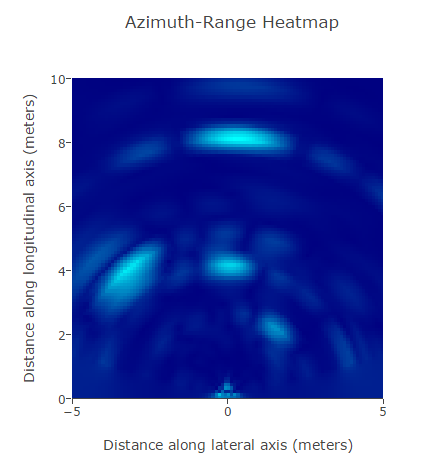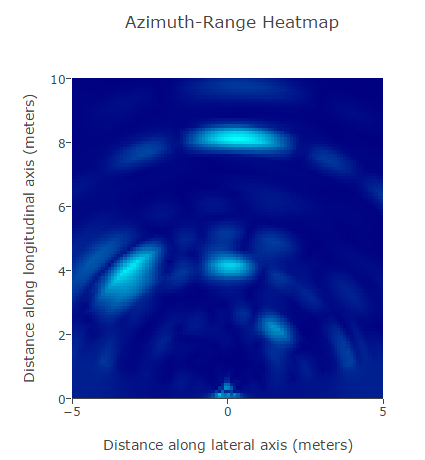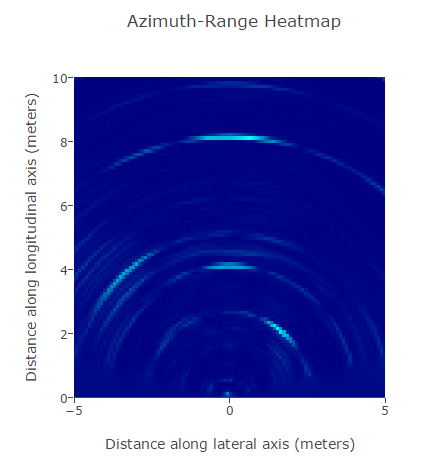Customer's evaluating IWR162BOOST and noticed targets appear to generate false targets at different angles. This looks like a pretty standard sync function in the radial dimension. But it seems to produce the limitation that you can only detect the strongest target at a given radial distance. Otherwise lower-strength targets at the same distance but different angles might get lost in the signal’s false radial energy.
This image uses the optimized settings TI provided.
This image uses the GUI default settings. You can see the full radial ring of noise more obviously in this data:
Please advise.
Thanks,
Mark




